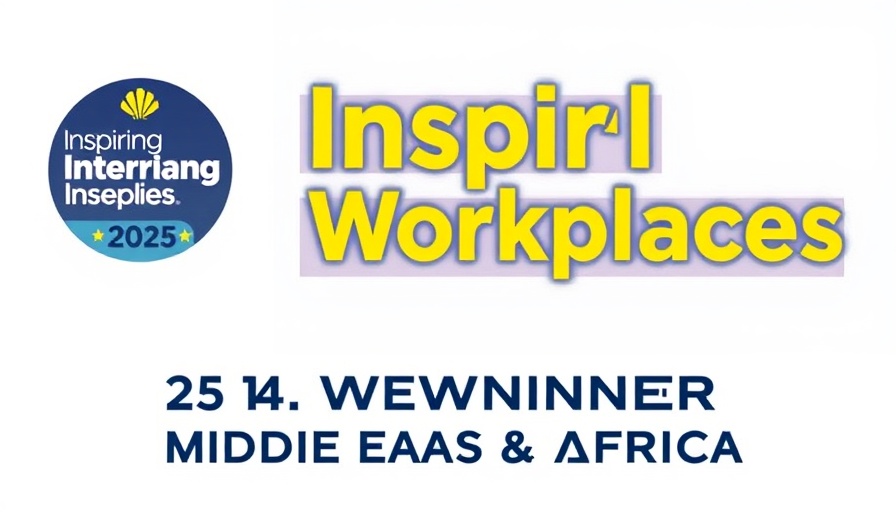
The Rising Stars of 2025: Celebrating Extraordinary Workplaces in the Middle East and Africa
The landscape of workplaces in the Middle East and Africa is undergoing a profound transformation, with the Inspiring Workplaces Awards spotlighting organizations that prioritize innovation, employee well-being, and inclusive corporate cultures. As the 2025 winners were announced, there's an undeniable sense of optimism and inspiration permeating through the professional community.
A Closer Look at the Winning Organizations
The Inspiring Workplaces Group feted numerous organizations that exemplified greatness in creating work environments that empower their employees. This year’s accolades went to companies that demonstrated exceptional standards in leadership, employee engagement, and social responsibility. The spotlight on these winners not only acknowledges their success but also encourages other establishments to aspire towards similar principles of excellence and innovation.
The Importance of Inspiring Workplaces: A Broader Context
In discussions surrounding workplace environments, the value of inspiring workplaces cannot be overstated. Research indicates that such environments not only drive employee satisfaction but also enhance productivity, ultimately leading to better organizational performance. In a region plagued by economic challenges and a complex political landscape, fostering inspiring workplaces can be a catalyst for change, promoting worker rights and uplifting communities.
Future Predictions: The Evolution of Workplace Culture
As we look towards the future, we can expect a shift in workplace expectations. Companies are increasingly adopting flexible work arrangements and prioritizing mental health resources. The COVID-19 pandemic has indelibly changed perceptions of work-life balance and brought to the fore discussions on inclusivity and diversity. The approach to leadership is evolving, with an emphasis on empathetic management styles that resonate with a younger workforce eager for meaningful engagement.
Counterarguments: The Challenges That Lie Ahead
While the announcement of these awards is a cause for celebration, it is crucial to consider potential challenges. The economic climate remains precarious, with issues such as unemployment and inequality still affecting many. Critics argue that the paradigm of inspiring workplaces should not overlook the precarious realities faced by a significant portion of the workforce who may not have access to such enriching environments. Addressing structural inequalities and ensuring wide-scale participation in the benefits of uplifting workplaces will be pivotal going forward.
Common Misconceptions about Inspiring Workplaces
A common misconception is that creating an inspiring workplace is solely the responsibility of top management. However, the role of every employee in fostering an inclusive and motivational environment cannot be undermined. Employees can advocate for practices that enhance workplace culture, share feedback, and play a part in shaping their organizations’ mission and values. Thus, inspiring workplaces are a collective endeavor reliant on engagement from all levels.
In conclusion, the announcement of the 2025 Inspiring Workplaces winners is not just a mere accolade; it serves as a hopeful signal for professionals throughout the Middle East and Africa. As we salute these exemplary organizations, it’s imperative that we strive for broader inclusivity within our workplaces and draw on the lessons learned from these leaders. Stakeholders must leverage these insights to foster environments that truly inspire.
Learn more about the Inspiring Workplaces winners and become part of the movement towards uplifting workplace environments.
 Add Row
Add Row  Add
Add 




Write A Comment